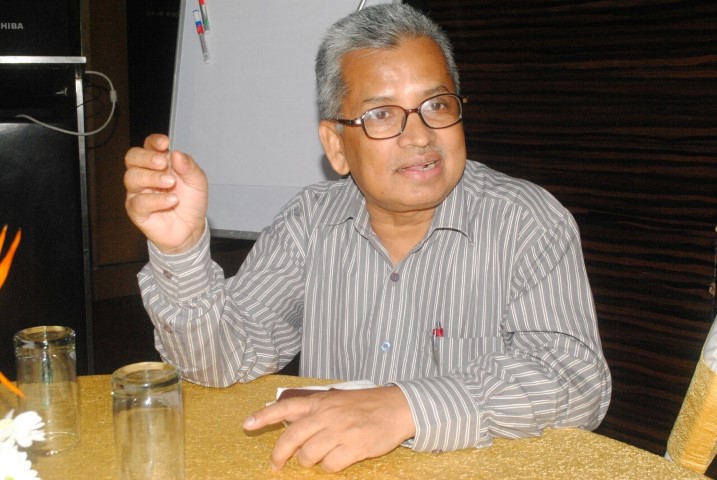NewZNew (Chandigarh) : Idiopathic Pulmonary Fibrosis (IPF) is a devastating, irreversible and rare disease that globally affects roughly 5 million individuals a year. Due to the increasing incidence of IPF in Chandigarh, doctors from the Postgraduate Institute of Medical Education and Research (PGIMER) today addressed the media with an aim to increase awareness of the growing IPF cases, its distinct symptoms, lack of treatment and disease associated deaths.

Idiopathic Pulmonary Fibrosis is a type of lung disease that results in damage and scarring (fibrosis) of the lungs. Due to this, the lungs shrink in size, thus affecting their ability to deliver oxygen to the body. The major symptoms are in the form of progressive breathlessness and persistent dry cough. The disease affects subjects usually above the age of 50 years. Males are more commonly affected than females and the disease is seen more often in smokers than non-smokers. As the disease progresses, day to day activities are hampered as the individual suffering from IPF finds it extremely difficult to function due to progressive breathlessness.
Highlighting the incidence and symptoms of Idiopathic Pulmonary Fibrosis in Chandigarh, Prof. Digambar Behera, Senior Professor and Head, Dept. of Pulmonary Medicine, PGIMER said, “In the past few years, I have observed an increase in the number of IPF cases. The disease is such that its symptoms tend to vary from individual to individual, however, the initial symptoms always involve breathlessness upon exertion and dry cough that lasts longer than 8 weeks. If any individual experiences these symptoms, it is extremely vital that they visit a doctor for early and accurate diagnosis, appropriate treatment and better patient care.”
The average life span of those affected with IPF is generally 2 to 5 years from the time of diagnosis. There is no cure for the disease. However, only in the past few years, two drugs, namely pirfenidone and nintedanib have become available that slow down the progression of the disease. Hence, early diagnosis of IPF is of extreme importance as it will help reduce the effects of the symptoms, the progression of the disease and possibly increase the life span of the individual.
Emphasizing on the causes of IPF, Dr. Ritesh Agarwal, Additional Professor, Dept. of Pulmonary Medicine, PGIMER said, “IPF is known to usually affect middle-aged and older adults aged between 40 to 70 years. Smokers are at a higher risk of contracting IPF in comparison to those who have never smoked. However, genetics can also play a role in the development of IPF.”
Commenting on the developments and progress in IPF treatment, Dr. Sahajal Dhooria, Assistant Professor, Dept. of Pulmonary Medicine, PGIMER said, “There is currently no cure or procedures that can remove the scarring from the lungs. Further, the treatments available will only reduce the scarring progression and may not necessarily reduce the symptoms of cough, breathlessness and other symptoms associated with the disease. Further, misdiagnosis is very easily possible wherein IPF can be mistaken for ageing, cardiac disease, bronchitis, asthma, chronic obstructive pulmonary diseases, and other types of interstitial lung diseases. While a form of treatment called corticosteroids or steroids work in other forms of interstitial lung diseases, they do not work in IPF. The most effective way to diagnose IPF at an early stage is to create awareness and make sure that all respiratory patients, especially after the age of 50 years are actively checked for IPF.”
Commenting on the utility of lung transplantation in the management of IPF, Dr. Ashutosh N. Aggarwal, Professor, Dept. of Pulmonary Medicine, PGIMER said, “As there is no cure available for IPF and the disease has a relentless course despite treatment, the only option for advanced stage disease is lung transplantation. In this, the lungs of the patient are replaced by a single or both lungs taken from a dead donor. A successful transplantation may increase survival of a patient with advanced IPF, with a 5-year survival rate of 50%. There is no clearly successful lung transplant programme in India as yet, although a few cases have been reported from Chennai and elsewhere. The PGIMER is in the process of starting a lung transplant programme. We are already enrolling patients, although the first transplant is yet to take place.”





